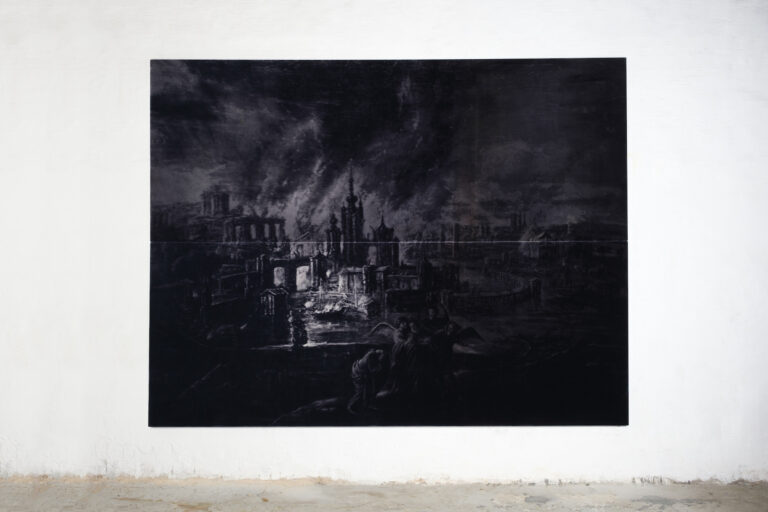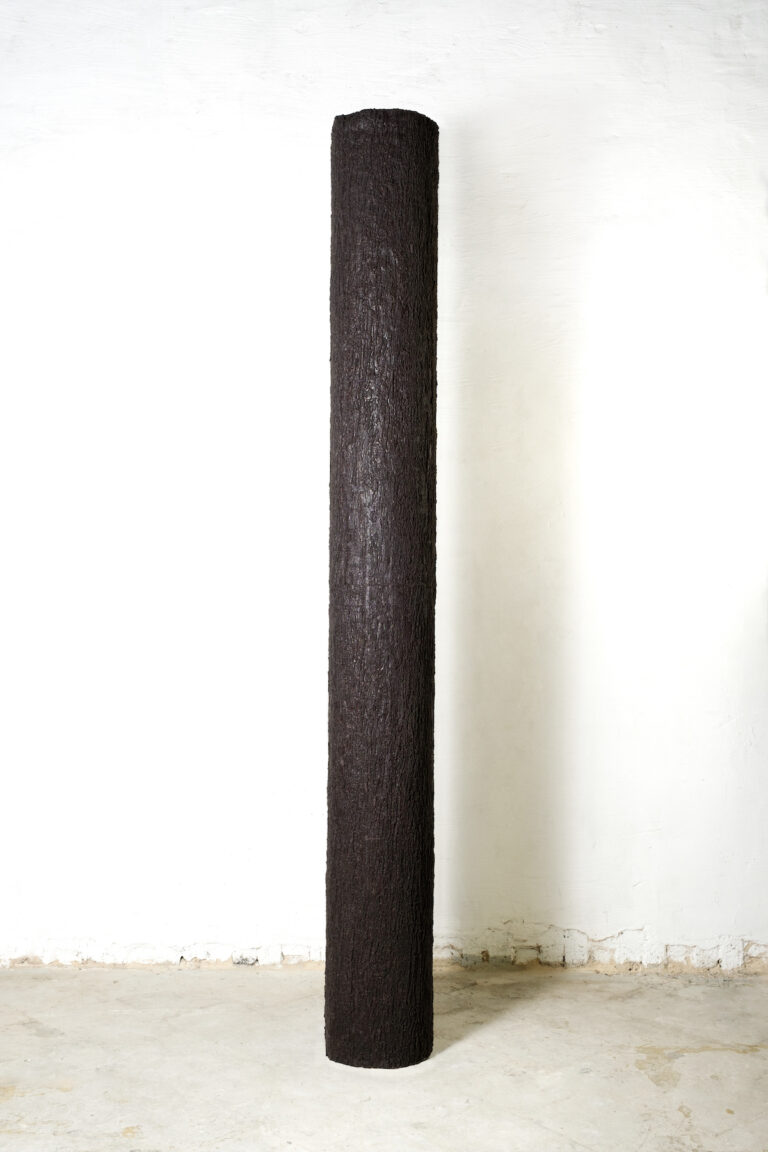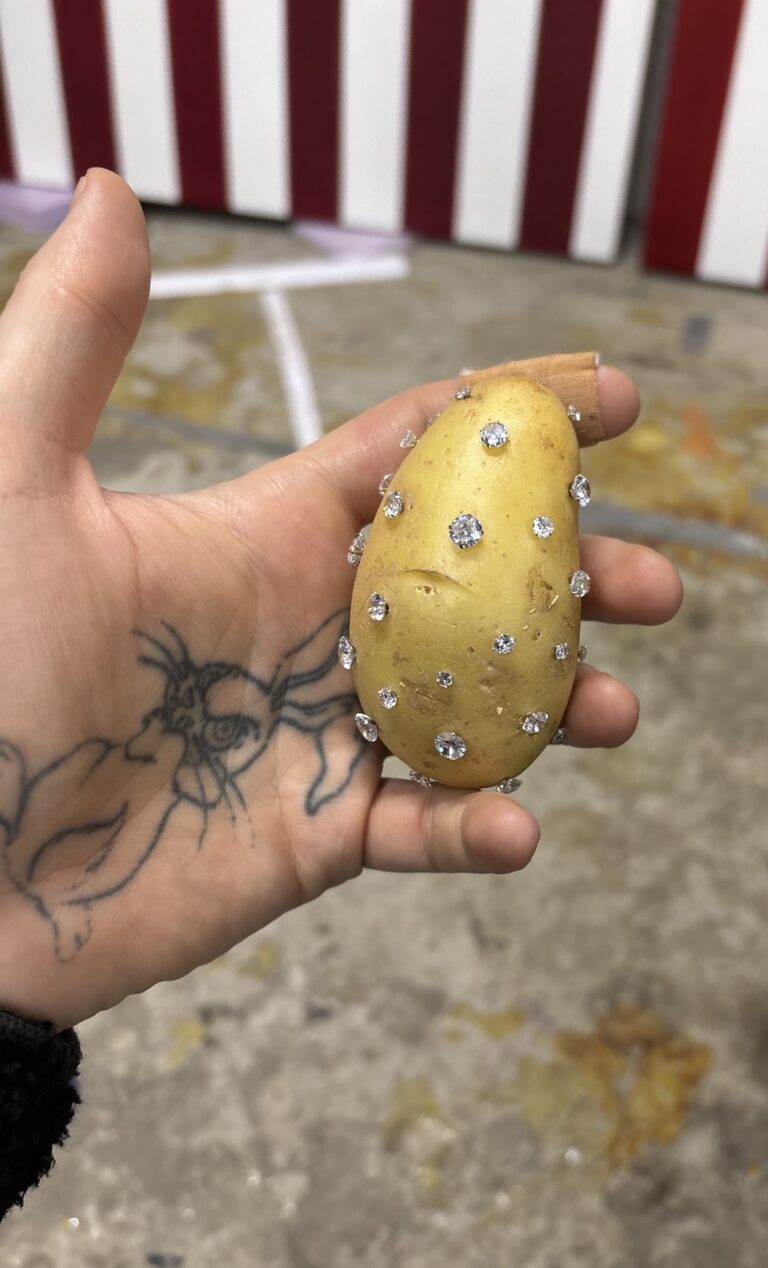Benjamin Lallier
Lying in the Kitchen
2 MAY until 30 JUN 2025
Opening – 2 MY 2025, 6-9 pm

Benjamin Lallier
Sodom and Gomorrah Afire, 2024
Sun bleached velvet, 230 x 300 cm
© Benjamin Lallier, 2025. Courtesy of the artist and Heidi, Berlin.
A frog comes out of the water, like the fish losing fins and navigating a new sphere. Does the frog stumble? What is this brave new world? A snail on a razorblade made of astroturf. It stares into a puddle and wonders if to go back. The mirrored reflection is a form of artificial communication. An oracle that feeds back its own bias.
Do I see a glass city on the horizon? The belief in the imagination is the only thing separating us from the abyss.
To reflect we always and only need the right device. A grotesque is maybe the truest sense of beauty.
Text by Steven Warwick

Benjamin Lallier
Tree (#2), 2024
Wood, metal and silicone, 300 x 32 cm
© Benjamin Lallier, 2025. Courtesy of the artist and Heidi, Berlin.

Benjamin Lallier
Studio detail, 2025
© Benjamin Lallier, 2025.
Courtesy of the artist and Heidi, Berlin.
Benjamin Lallier (b. 1985) lives and works in Berlin. The artist’s versatile practice is rooted in an exploration of the nature of human desire for the “good life”—reflecting upon our ability to project our aspirations and dreams, often blindly, onto places, objects, ideas, and other people. As a result, he critiques social structures and allusions of idealism. His satirical examinations take shape in the form of paintings, sculptures, and installations that appropriate references from a disparate range of historical and contemporary sources—Bruegel’s paintings of peasants, Caravaggio’s depiction of Dionysus, moral biblical stories such as Adam and Eve or Sodom and Gomorrah, the 18th Century Republic of Pirates in Nassau, Brechtian theatre, Dolly the cloned sheep, or an image of porn-starturned-actress Chloe Cherry, for example. Underlying Lallier’s practice is an interest in testing the limits between what is real and what is illusory. He often plays with the idea of seriality and repetition by working in series that contain what he terms “fake” copies—where no image, or object, is ever the same.
